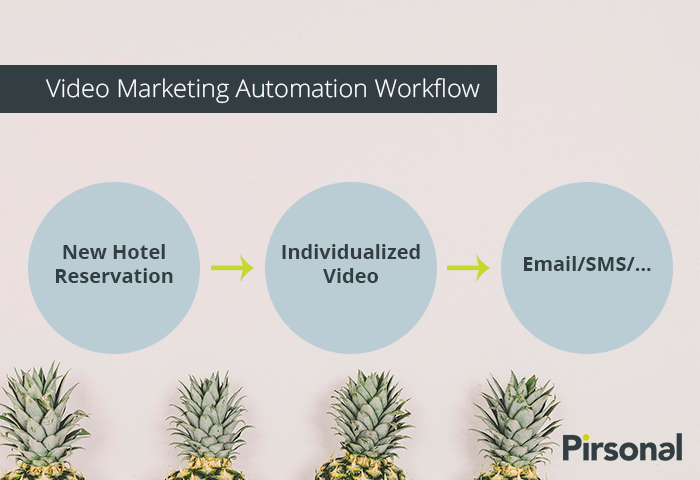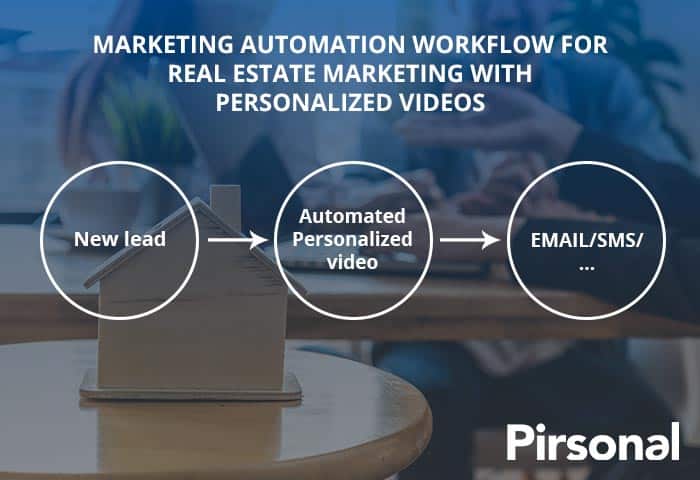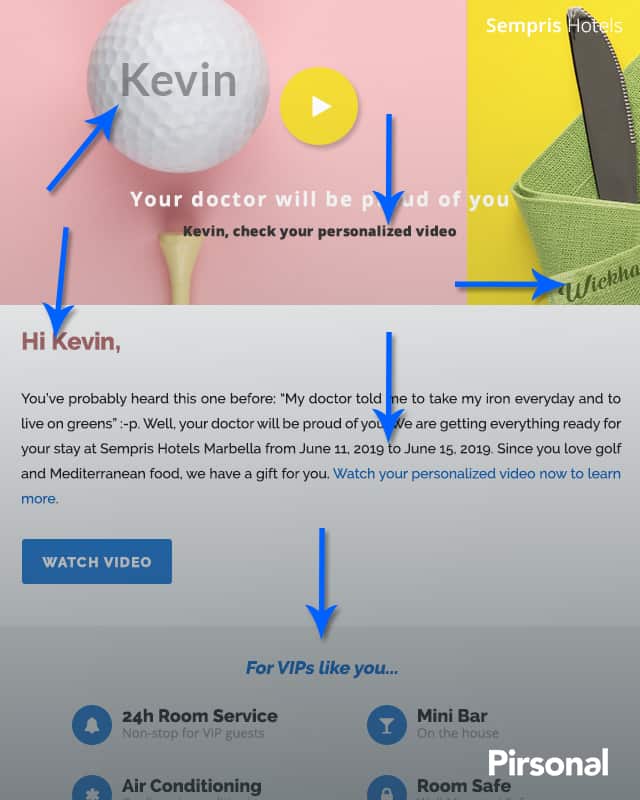Video marketing has become an essential tool for businesses to promote their products and services effectively. But most marketing teams and leaders find themselves stuck when trying to create a successful video marketing campaign.
To create a successful video marketing campaign, you should understand your audience and create content that connects with them. This also requires engaging viewers with a compelling story that captivates their attention and optimizing your videos for search engines using relevant metadata and content.
Furthermore, use social media platforms to distribute your videos and reach a wider audience based on your goals. Then measure and analyze metrics like views and engagement to refine your strategies for better results.
By implementing these tips, you’ll be on your way to creating impactful videos that resonate with your audience and support successful marketing campaigns.
However, the majority of marketers miss a critical step to make video campaigns more effective.
Because of this, most create video marketing strategies that tend to be irrelevant and don’t move audiences to take action.
In this article, we will explore eight valuable tips that can help you make your video marketing campaign a resounding success that drives engagement and moves viewers to take action.
Having Clear Video Goals
A key aspect of any successful video marketing campaign is having clear goals. These goals will determine absolutely everything, from the type of videos you’ll create, to the distribution channel.
There are many video marketing strategies you can plan and execute. However, not every strategy will help you accomplish the specific goals and KPIs you initially had in mind.
In my experience, this is something many marketing teams don’t pay attention to this really important aspect.
As a result, they end up creating a good-looking video that even gets views. To then find out that this video didn’t, for instance, sell.
So, what are the specific goals your video marketing efforts should help you with? Is video even the most ROI-efficient way to accomplish them?
The video marketing strategies you implement should have a set of marketing metrics attached to them. Otherwise, we’ll be talking about good intentions only.
And good intentions don’t move the needle.
Understanding Your Target Audience
Understand your target audience well before starting a video marketing campaign, and only after setting your video goals.
There are many approaches you can follow to do this.
For instance, your team or organization already uses customer personas.

You know the trick.
Research their demographics, interests, and preferences to create the types of video content that resonate with them.
By tailoring your videos to suit their needs and desires, you can capture their attention and establish a meaningful connection.
But there is a catch.
In a crowded marketplace, you should take into account that buyer or customer personas won’t be enough.
This is why I recommend using what I call augmented buyer personas.
Augmented buyer personas are created by combining existing customer personas with gathered customer data, context, and business goals.
This approach gives you a better picture that leads to a better understanding of your target audience and how to target them with video.
Then, you can create an augmented buyer persona by gathering information from different sources, considering the individual’s situation, data, and business objectives.
This way, your video marketing strategies, and messages are aligned with what both your customer and your organization need.
As a result, you increase the effectiveness of your video content.
Crafting a Compelling Storyline
A captivating storyline is the cornerstone of any successful video marketing campaign. Ideally, develop a narrative that engages viewers from the start and keeps them hooked until the end.
But this is not always possible. And, to be honest, you don’t always need this to happen to achieve your video goals.
The convention says that you should use storytelling techniques such as introducing a conflict, building suspense, and providing a resolution.
But this doesn’t apply to all types of videos, goals, audiences and distribution channels.
For example, if you want to make videos for social media, make sure to tailor them to your audience and the way they usually watch content on social media.
If most of them mute the audio of the videos, then make sure that the storyline is also obvious through subtitles.
However, if you share the video by email to increase email CTR, then your story will start from the thumbnail. So the video thumbnail should be effective in helping contacts click to then watch the video.
The point is to truly adapt the content of the video and around the video to the goals and audience you want to target.
In my view, the video can be the ugliest thing you’ve ever seen.
If the story or information is relevant to the individual viewer and their current journey, the content will connect and engage them more.
I made a video where I explain how a health industry company used a seemingly boring video to increase engagement, conversions, and online payments.
Watch the video now so that you learn how to replicate their video strategy today depending on your goals.
What helped them succeed with this video marketing campaign?
They adapt each part of the video to different types of viewers, and they provide the type of information each needs to take action.
A well-crafted storyline will not only evoke emotions and leave a lasting impact on your audience. It will help them move to the next stage of the customer journey.
Personalizing Videos to Increase Engagement
Personalizing video is a powerful strategy to increase engagement with your audience. When you tailor your videos to resonate with individuals on a personal level, you create a deeper connection and capture their attention.

Here are some effective ways to personalize your videos:
- Address viewers by name: Begin your video with a personalized greeting that includes the viewer’s name. This simple touch instantly grabs their attention and makes them feel acknowledged.
- Segment your audience: Divide your audience into specific segments based on demographics, interests, or buying behavior. Create different versions of your videos that cater to each segment’s unique needs and preferences.
- Use personalized storytelling: Craft stories that reflect the experiences, challenges, and aspirations of your target audience. By relating to their personal journey, you evoke emotions and establish a relatable connection.
- Incorporate user-generated content: Encourage your audience to submit their own videos or share their experiences related to your brand. Incorporate this user-generated content into your videos, showcasing real people and real stories.
- Leverage data and automation: Utilize data analytics and automation tools to gather insights about your viewers. This data can help you personalize video recommendations, suggestions, or offers based on their past interactions or preferences.
- Interactive elements: Incorporate interactive elements such as quizzes, polls, or clickable annotations and buttons within your videos. This encourages active participation and engagement from viewers.
Remember, the key to effective personalization is to make viewers feel seen, understood, and valued. Commonly, businesses send personalized videos by email, WhatsApp, or SMS.
You can automatically create personalized videos to engage with customers with specialized software like Pirsonal.
With video personalization and marketing automation, your marketing can become customer-centric as it will resonate with your contact’s context.
For example, take a look at the following infographic. It shows a marketing automation workflow where an individualized video is automatically created when a new hotel guest makes a hotel reservation.

With this strategy, for instance, you can add relevant videos to your hotel marketing strategy.
Similarly, in real estate marketing, businesses can increase lead engagement and close deals faster with video. Take a look at the following image to learn how.

Use marketing automation and personalized videos to engage with real estate leads
Since the majority of brands and agencies don’t have experience with personalized video creation, we walk with them to help them succeed.
Make sure to contact us today if you need to increase engagement with video personalization.
Use these strategies to make personalized videos that connect with your audience and increase their engagement, loyalty, and your video marketing success.
Optimizing Videos for Search Engines
If your goal is to use video to increase organic traffic to your social media platforms, landing page or website, then it’s essential to optimize them for search engines.
Conduct keyword research related to your industry and incorporate those keywords naturally into your content, video titles, descriptions, and tags.
Additionally, provide a concise and engaging video thumbnail that entices viewers to click and watch.
By optimizing your videos, you increase their visibility and attract more organic traffic.
Optimizing Video for Email Marketing
To improve email engagement metrics like CTR or conversion rates with video, we need a different approach.

In the following video, I explain how to effectively use video to boost email marketing conversion rates.
As you’ll learn from the video above, there are different ways to add a video to an email:
- Playing the video in the email itself. This is the one most people refer to when they talk about embedding videos in email campaigns.
- Attaching the video file to the email. This is not a good idea. Video files are often heavy and email clients and servers can see the email as spammy. This is something you want to avoid. Also, it delivers the wrong user experience and this can damage your email conversions.
- Using animated GIFs from videos. This option is similar to embedding the video and often goes along with this one. Basically, if the email client doesn’t support video content, there is a fallback option with an animated GIF. I strongly recommend this option if you add videos to your email campaigns.
- Linking to a landing page with a video. Either through a video thumbnail, button, or text with a link. The video thumbnail can also be an animated GIF and, in some cases, even have some personalization. This is common practice in personalized video marketing.
Leveraging Social Media Platforms
Similar to video search engine optimization, social media platforms offer an incredible opportunity to distribute your video content and engage with your target audience.
Identify the social platforms where your audience is most active and tailor your videos to suit each social platform’s unique requirements.
Encourage viewers to share your videos by including social sharing buttons and captions that prompt them to tag their friends.
If you have a global audience, use localization strategies in digital and video marketing.
Another key strategy you can use through social media channels is user-generated content (UGC).
Through UGC, you empower your audience to create content and amplify your message.
With automatic video editing, you can make sure that every video your audience creates is on-brand.
By leveraging social media channels effectively and localizing your content, you can amplify the reach and impact of your video marketing campaign.
I made a full guide about how to strategically use video across the customer journey to help brands better engage with their audiences.
Make sure to read this guide today so that you can successfully make and incorporate video and other types of content in your strategy.
Bear in mind that there are other creative ways of using video in your marketing. For example, you can add a video to direct mail campaigns through QRs to increase the response rate of these campaigns.
Measuring and Analyzing Results
To gauge the success of your video marketing campaign, it is crucial to measure and analyze and optimize the results of your approach.
Use analytics tools to track key metrics such as views, engagement, conversion rates, and click-through rates.
To optimize the performance of your marketing, take into account your goals, audience, distribution channel, and target KPIs.
If you are in B2B marketing, the optimization of your marketing might be a bit different, but still, the same principles apply.
If your video is part of a personalized marketing strategy, make sure to track key metrics on a per-contact basis.
With Pirsonal Player, you can track video interactions for every contact. This is because Pirsonal Player is an interactive video player focused on personalization.
Analyze this data to gain insights into what is working and what can be improved. Adjust your strategies accordingly to optimize future video marketing efforts and achieve better results.
Types of Videos and Distribution Channels for Video Marketing Campaigns
The following table shows the different types of video content you can make depending on your goals, funnel stage and the type of customer experience (CX) outcome you need to offer.
This strategy considers 4 customer experience dimensions, how they gather information to decide, the funnel stage and the ideal communication channel.
| Online CX | Information Experience | Funnel Stages | Type of Videos | Recommended Channels |
| Informativeness | Cognitive | Interest, Consideration | How-to, explainer videos, interactive videos | YouTube Channel, Knowledge Base, Blog |
| Entertainment | Affective | Awareness, Loyalty, Advocacy | Social media videos, explainer videos, video ads | Facebook, YouTube, Blog |
| Social Presence | Social | Consideration, Intent | Social media videos, customer testimonials | Facebook, YouTube, Twitter, TikTok |
| Sensory Appeal | Sensory | Consideration, Intent, Purchase | personalized videos, interactive videos | Email, SMS, WhatsApp, Landing Page |
FAQs (Frequently Asked Questions)
How long should my marketing videos be?
The ideal length of marketing videos depends on the platform and the purpose of the video. However, it is generally recommended to keep them between 30 to 90 seconds for maximum impact and engagement.
Should I hire professionals to create my marketing videos?
While hiring professionals can elevate the quality of your videos, it is not always necessary.
With the right equipment, software, and a clear vision, you can create compelling videos in-house, even automatically. It ultimately depends on your budget and resources.
Can I repurpose my existing content into videos?
Absolutely! Repurposing existing content, such as blog posts or presentations, into videos can be a cost-effective way to create engaging video content. Just ensure that the content translates well into a visual format.
How often should I release new videos?
Consistency is key when it comes to video marketing. Determine a publishing schedule that aligns with your resources and audience expectations. Whether it’s weekly, bi-weekly, or monthly, stick to a consistent release schedule to maintain audience engagement.
How can I encourage viewers to take action after watching my videos?
Add a clear and personalized CTA to your videos to encourage viewers to take a specific action, like going to your website, subscribing to your channel, or buying something. Analyze video metrics to make sure to add the CTA where it has the highest impact.
Conclusion
Implementing these tips can significantly enhance the success of your video marketing campaign.
You can create effective videos by setting clear goals, knowing your audience, using personalization, telling interesting stories, making sure they can be found easily online, using social media, and tracking the results.
Remember, video marketing is an ever-evolving field, so continuously adapt and refine your strategies to stay ahead of the competition.

